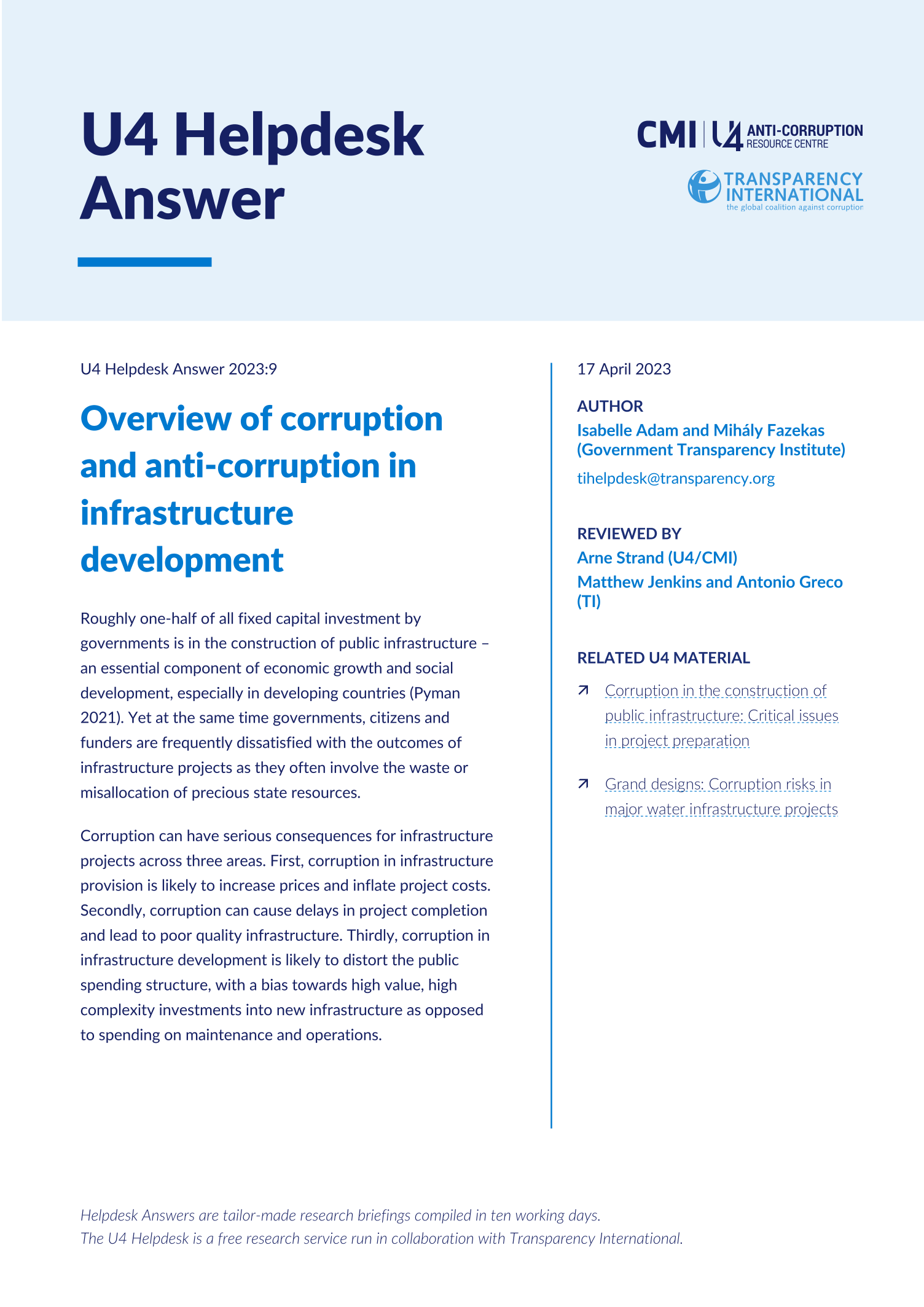Main points
- Risk factors inherent to infrastructure projects that render them particularly susceptible to corruption include the fact that these projects are often large, long-term and complex, involving numerous actors. Moreover, corruption safeguards such as transparency in all phases of the project and contracting cycles as well as citizen participation are often neglected.
- Each phase of the infrastructure development cycle entails specific risks, ranging from undue influence by politicians in project selection to insider trading during the disposal of assets.
- Most countries have implemented mechanisms to reduce some of the more obvious entry points for corruption, such as by improving transparency and competitiveness during the procurement process. However, corruption may simply shift to other stages of the project cycle. For instance, if the contract award is difficult to influence, corrupt activity may centre on the project design and appraisal phase or through amendments to the contract during project implementation.
- Hence, any strategy attempting to tackle corruption in infrastructure will need to approach the sector more holistically and address the fundamental corruption risk factors related to regulatory frameworks and institutional capacity as well as the lack of transparency and public participation.


